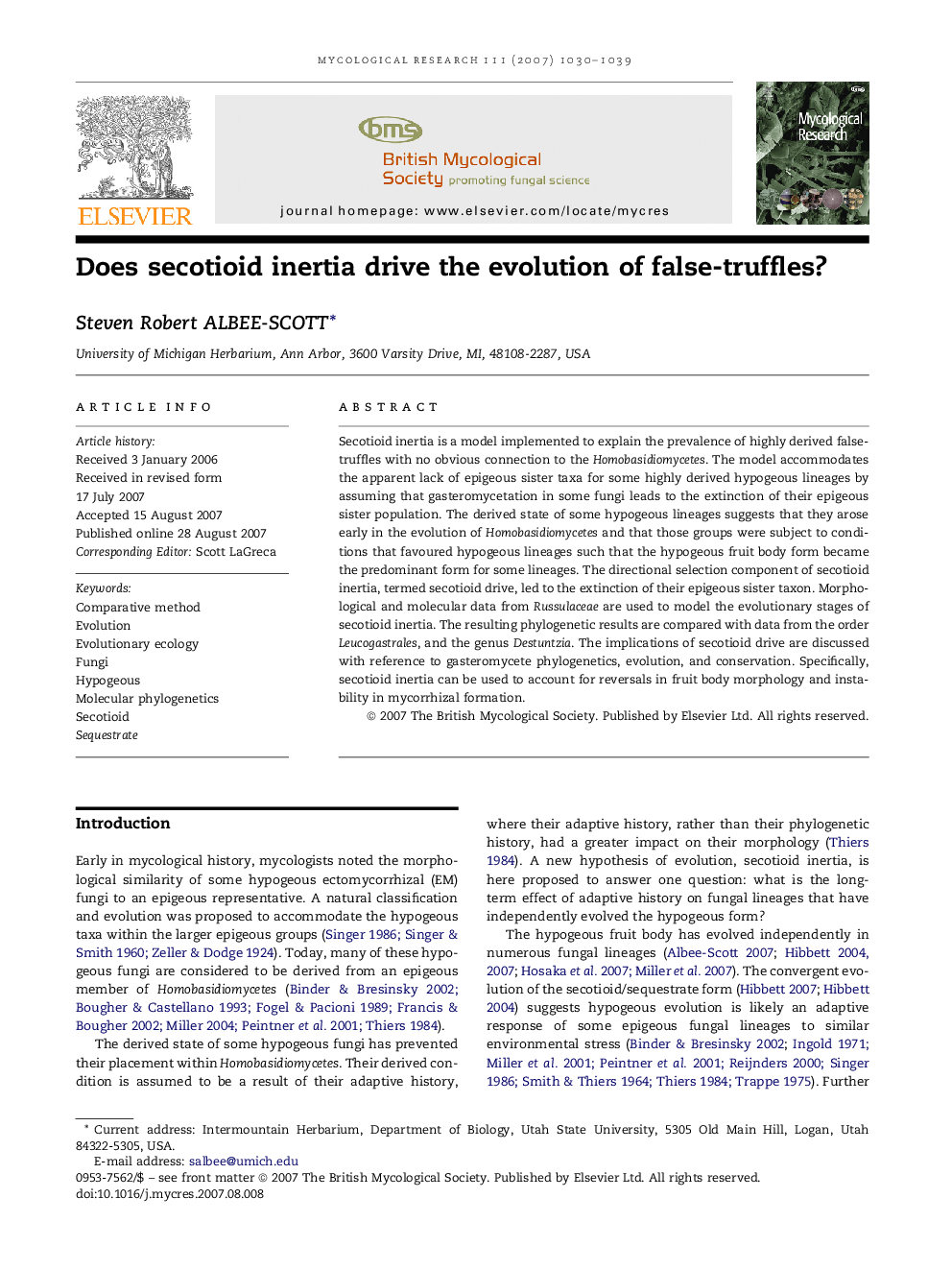| Article ID | Journal | Published Year | Pages | File Type |
|---|---|---|---|---|
| 4357884 | Mycological Research | 2007 | 10 Pages |
Secotioid inertia is a model implemented to explain the prevalence of highly derived false-truffles with no obvious connection to the Homobasidiomycetes. The model accommodates the apparent lack of epigeous sister taxa for some highly derived hypogeous lineages by assuming that gasteromycetation in some fungi leads to the extinction of their epigeous sister population. The derived state of some hypogeous lineages suggests that they arose early in the evolution of Homobasidiomycetes and that those groups were subject to conditions that favoured hypogeous lineages such that the hypogeous fruit body form became the predominant form for some lineages. The directional selection component of secotioid inertia, termed secotioid drive, led to the extinction of their epigeous sister taxon. Morphological and molecular data from Russulaceae are used to model the evolutionary stages of secotioid inertia. The resulting phylogenetic results are compared with data from the order Leucogastrales, and the genus Destuntzia. The implications of secotioid drive are discussed with reference to gasteromycete phylogenetics, evolution, and conservation. Specifically, secotioid inertia can be used to account for reversals in fruit body morphology and instability in mycorrhizal formation.
